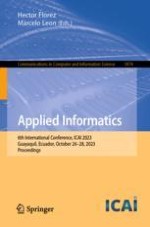This book constitutes the proceedings of the 6th International Conference on Applied Informatics, ICAI 2023, which took place in Guayaquil, Ecuador, in October 2023.
The 30 papers presented in this volume were carefully reviewed and selected from 132 submissions. The contributions are divided into the following thematic blocks: Artificial Intelligence; Data Analysis; Decision Systems; Enterprise Information Systems Applications; Geoinformatics; Health Care Information Systems; Interdisciplinary Information Studies; Learning Management Systems; Virtual and Augmented Reality.
